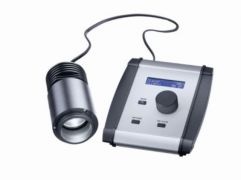Jul 20 2009
Olympus has introduced the exciting new LightManager module for its BX41 and BX51 upright microscopes. The highly intuitive Olympus LightManager can be retrofitted and enables the user to set the desired illumination intensities for each objective and technique in use. This ensures more efficient control over objectives and illumination, providing excellent imaging results.

It is an optical fact that different magnifications and different techniques require different illumination intensities to keep the same brightness in the field of view. Furthermore, when viewing a sample it is not unusual to move up and down through the available objectives. This also means changing the light intensity with each turn of the nosepiece to keep the same brightness. The Olympus LightManager is an optional accessory that combines an advanced LED transmitted light source and a nosepiece sensor, which automatically senses the objective in use. LEDs provide a consistent colour temperature irrespective of intensity, removing the need for neutral density filters. As a result of this unique system, the optimum light intensity levels used for each objective in a nosepiece can be set for up to four different illumination methods. Therefore as a user moves between objectives the light levels will be automatically adjusted to the pre-set intensities. When switching to a different imaging technique e.g. from bright field to DIC, the user can make single change on the LightManager control to provide their pre-set intensities for that technique. As a result, once set the LightManger enables excellent time savings and makes microscopy much more efficient.
What is more, the LightManager can also provide a read-out of the objective in use so that software imaging tools such as Olympus cell* software can automatically record the correct magnification data for each image. This makes documentation and consistency much simpler.
The LightManager further expands the flexibility of the highly versatile Olympus BX41 and BX51. As a result, scientists can now match their microscope system to their research even more precisely. Furthermore, the high quality construction, ergonomic design and excellent UIS2 optical components ensure the best possible imaging results each and every time.